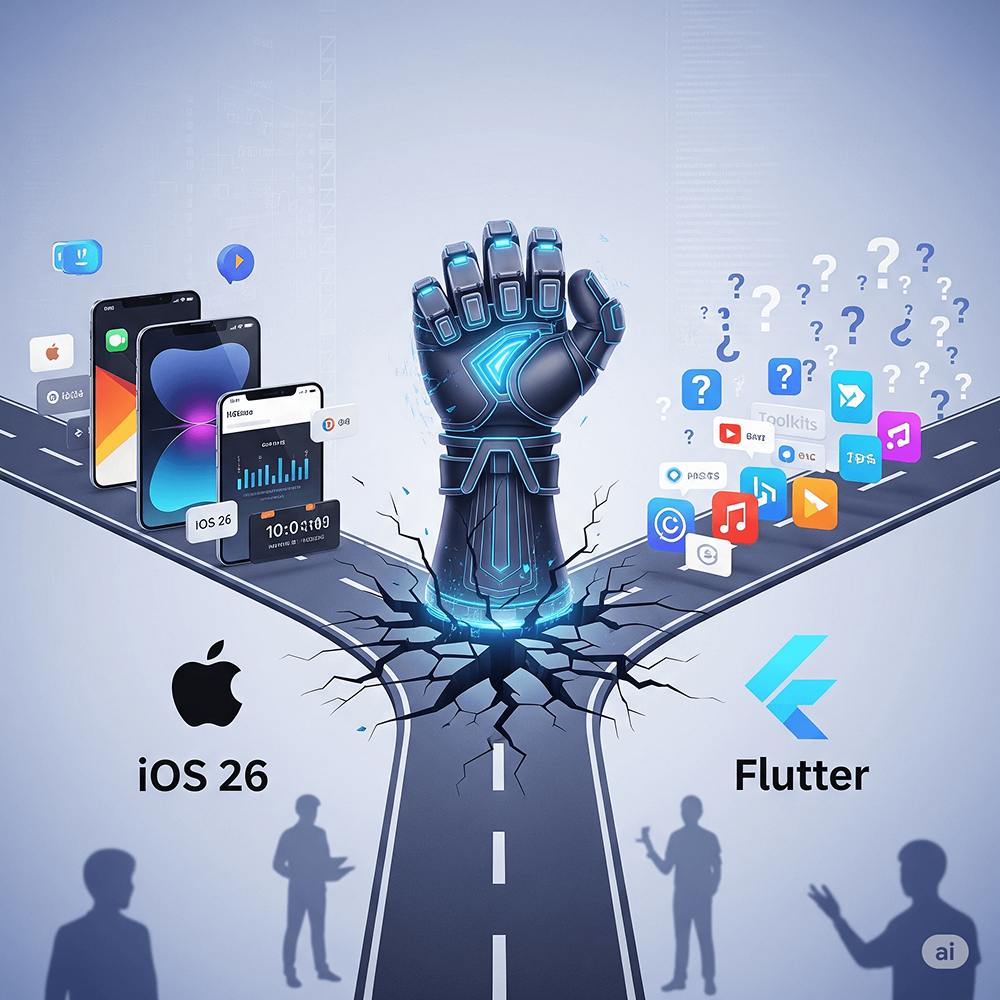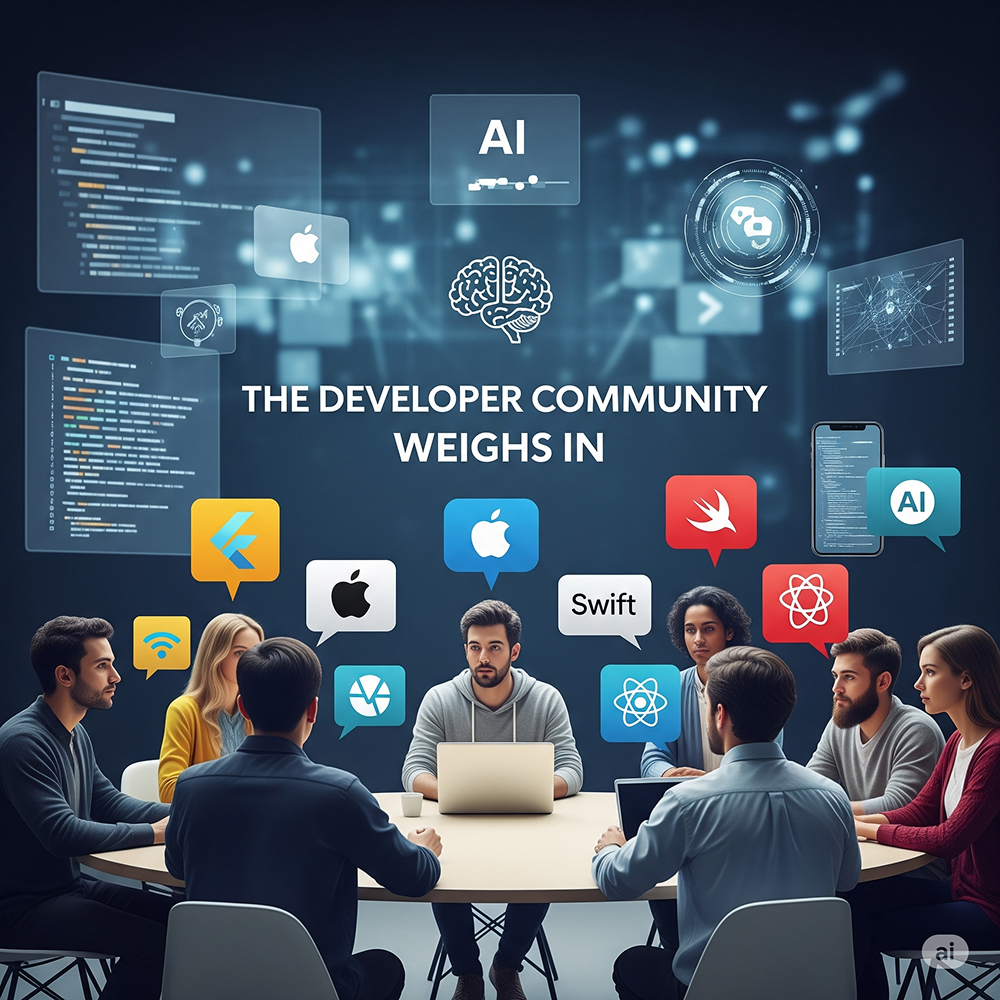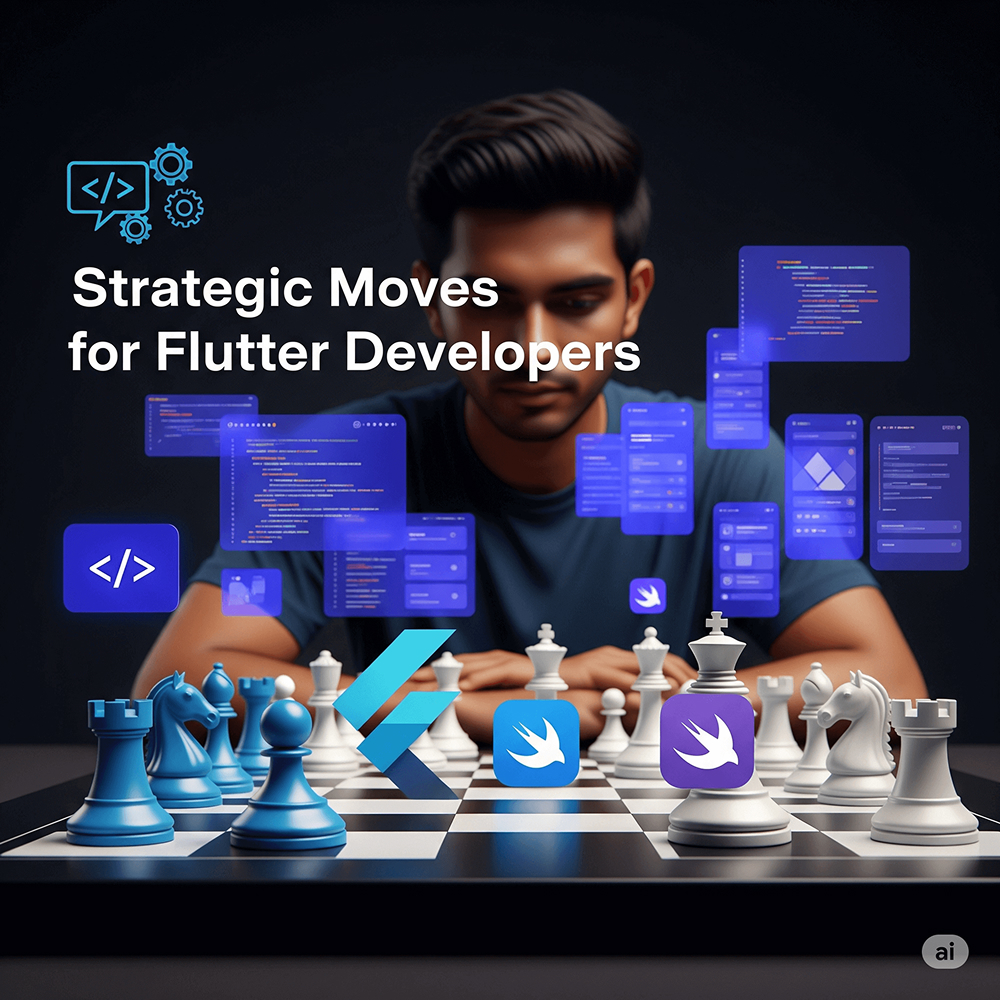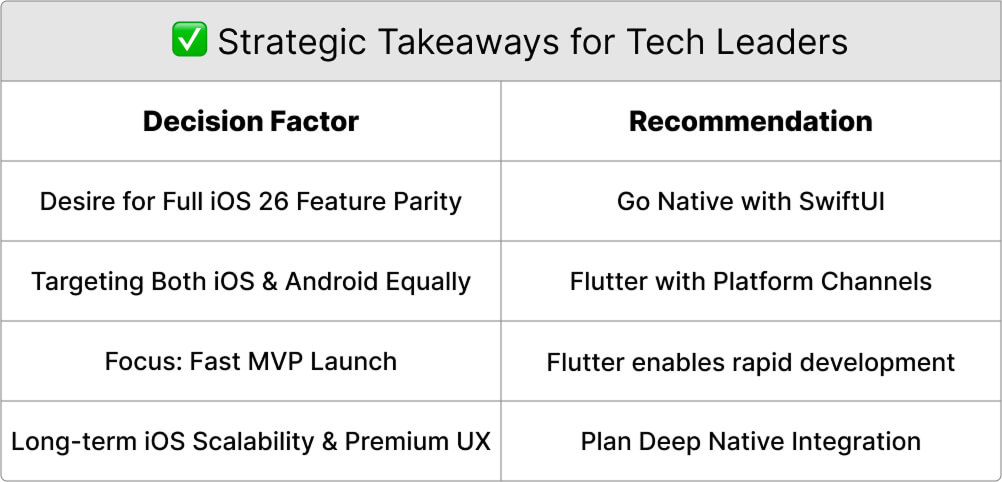Go Native or Go Home? Apple’s iOS 26 Raises the Stakes for Flutter Devs

Apple has just dropped iOS 26, and it's sending significant ripples through the mobile development landscape. With a suite of deeply integrated features, breathtaking performance enhancements, and further ecosystem control, Apple appears to be reinforcing a strong message: for the ultimate iOS experience, native development is paramount.
So, where does this leave Flutter, Google's popular cross-platform toolkit? Is this a definitive blow to its multi-platform promise, or simply a crucial wake-up call for adaptation? Let’s dissect what iOS 26 means for Flutter—and for the strategic future of app development.
iOS 26: A Deep Dive into Apple's Power Play
iOS 26 is not just an incremental update; it’s a foundational shift towards a more intelligent, visually stunning, and seamlessly integrated user experience. Here’s what developers are now grappling with:
- "Liquid Glass" Design Overhaul: A system-wide visual refresh featuring translucent, reflective, and refractive UI elements that dynamically respond to light and motion. This creates a deeply immersive and unified aesthetic across all apps and system controls.
- On-device Apple Intelligence (AI) & Neural Engine Enhancements: Deep integration of powerful on-device AI capabilities for real-time language translation, advanced image recognition, intelligent text generation, and dynamic app interactions. These are primarily exposed through new Swift and SwiftUI APIs.
- VisionOS & Spatial APIs (Enhanced): Further extension of Apple Vision Pro support, enabling even more sophisticated immersive experiences tightly woven into the native frameworks.
- SwiftUI 3.0+ Evolution: Significant advancements in SwiftUI, offering unparalleled control over dynamic island interactions, advanced system-level animations, and fluid transitions that are inherently designed for the native framework.
- Metal 4 Rendering Engine Enhancements: Major optimizations to Apple’s low-level graphics API, providing native developers with even finer-grained control over GPU rendering, crucial for cutting-edge graphics and performance.
- Seamless System-wide Module Interoperability: Native apps inherently benefit from effortless communication between app modules and core system features, minimizing the need for complex inter-process communication.
In essence, Apple is investing heavily in native experiences, rewarding apps built with Swift and SwiftUI with unparalleled performance, richer UI control, and the deepest possible integration into the iOS ecosystem.
The Gauntlet Thrown: Why iOS 26 Challenges Flutter

Flutter's core strength lies in its "write once, run anywhere" philosophy. However, iOS 26’s enhancements introduce significant friction points for cross-platform frameworks:
- Bridging the "Liquid Glass" Visual Gap: Flutter renders its own UI. Replicating iOS 26's dynamic, nuanced "Liquid Glass" effects—which involve complex real-time translucency, reflections, and refractions—within Flutter’s rendering engine (Impeller) is a monumental task. If not perfectly achieved, Flutter apps risk looking visually outdated or inconsistent with the new iOS aesthetic.
- Delayed Access to Cutting-Edge AI: While Flutter can access native features via platform channels, the immediate and seamless integration with Apple Intelligence’s powerful on-device models will be a challenge. Flutter apps may initially lag in offering the intelligent, context-aware features users will come to expect.
- Performance Disparity for High-Fidelity Experiences: For highly graphically intensive applications or those requiring ultra-low-latency interactions, the fine-grained control offered by native Swift and Metal 4 will likely result in a noticeable performance advantage over Flutter, despite Flutter's own Impeller engine optimizations.
- Complexity of System-Level Features: Features like advanced Live Activities, new Widget capabilities, and deeper App Intent integrations, while technically achievable in Flutter, often require building significant "native islands" or complex platform channel setups. This adds development overhead and can compromise the "single codebase" advantage.
- Development Workflow Hurdles: As seen in early iOS 26 betas, low-level system changes (like stricter memory protection for JIT compilation) can directly impact Flutter's core development workflow, causing debugging difficulties on physical devices until official workarounds or fixes are released.
The cumulative effect? Apps built purely with Flutter might begin to feel less polished, less responsive, and less inherently "Apple-like" to discerning end-users who are accustomed to the fluid native experience.
The Developer Community Weighs In

The release of iOS 26 has sparked significant debate across developer forums and social media:
- "iOS 26 unequivocally signals Apple's commitment to its native ecosystem. Flutter will struggle to keep pace without fundamental architectural shifts." — Prominent iOS Engineer on X
- "For startups and MVPs, cross-platform remains king for budget and speed. Not every app needs Vision Pro support on day one." — Flutter Dev Advocate on Reddit
- "We're actively re-evaluating our tech stack for future iOS projects. Swift and SwiftUI's new capabilities are incredibly compelling for our product roadmap." — CTO of a growing SaaS startup
This sentiment suggests a growing trend where some teams might consider a hybrid approach, using native Swift for performance-critical modules or unique iOS features, while maintaining other parts of their application in Flutter.
Strategic Moves for Flutter Developers

This isn’t the demise of Flutter, but it's undoubtedly a critical strategic juncture. Here's how Flutter developers and tech leaders can navigate this shift:
- Conduct a Thorough App Audit: Not every application needs to leverage every single iOS 26 feature. Critically evaluate which new capabilities (e.g., spatial UI, advanced real-time AI) are truly mission-critical for your specific app's value proposition and target audience.
- Embrace Hybrid Architectures: For features that demand deep native integration or cutting-edge performance, consider developing modular native Swift components and integrating them into your Flutter app using platform channels. This "best of both worlds" approach can provide a competitive edge.
- Stay Abreast of Flutter Updates: The Flutter team has a strong track record of rapidly adapting to platform changes. Monitor official announcements, GitHub issues, and roadmap updates closely for new plugins, enhanced Cupertino widgets, and improved iOS 26 compatibility.
- Deepen Native Understanding: Even if you stick with Flutter, a foundational understanding of native iOS development (Swift, SwiftUI, Apple's Human Interface Guidelines) will empower you to better diagnose issues, build effective platform channels, and create more "native-feeling" Flutter UIs.
- Prioritize Performance Profiling: Rigorously test your Flutter applications on actual iOS 26 devices, paying close attention to frame rates, memory usage, and battery consumption, especially when implementing visually complex or AI-driven features.
Does This Spell the End for Cross-Platform Apps?
- Rapid Prototyping & MVPs are crucial for market validation.
- Budget & Time Constraints favor a single codebase for multiple platforms.
- Android-First or Balanced Multi-Platform Audiences are the primary target.
- Apps Don't Require the most bleeding-edge, deeply integrated iOS-specific hardware or visual features.
However, it's undeniable that Apple is creating a more compelling incentive for developers to build within its native ecosystem. The fundamental question for businesses becomes: how much value will you forgo by not going native for your iOS audience?

Final Thoughts from CQLsys Technologies
At CQLsys Technologies, we’ve successfully delivered over 4500 mobile and web app projects across diverse industries. We understand that choosing the right tech stack is paramount to an app’s long-term success and user adoption.
Flutter still holds a strong position in the mobile development landscape. However, if your vision involves creating a truly premium iOS experience, leveraging Apple Vision Pro's spatial interfaces, or tapping into the most cutting-edge performance features, then native development is a strategic imperative.
Whether you're strategizing your next major release, contemplating a Flutter-to-native migration, or seeking to modernize an existing application, our expert team is here to guide you through these complex decisions.
